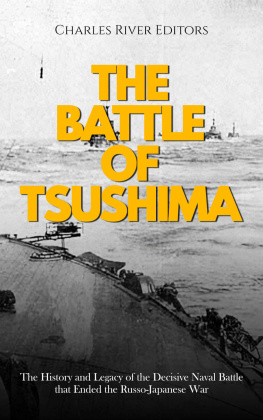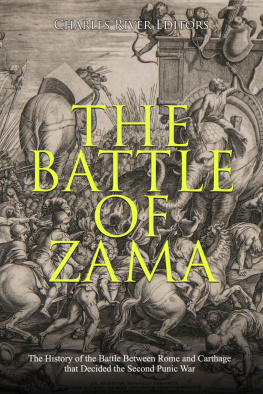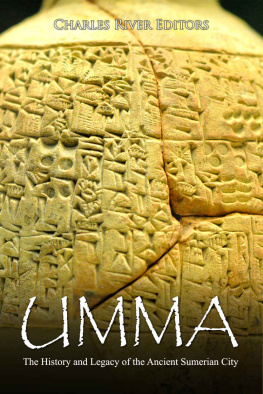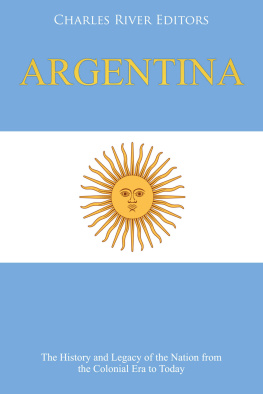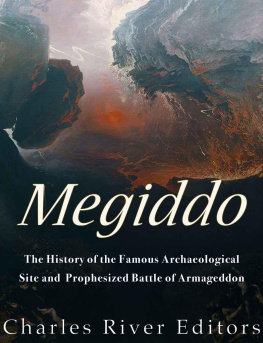Charles River Editors - The Battle of Tsushima: The History and Legacy of the Decisive Naval Battle that Ended the Russo-Japanese War
Here you can read online Charles River Editors - The Battle of Tsushima: The History and Legacy of the Decisive Naval Battle that Ended the Russo-Japanese War full text of the book (entire story) in english for free. Download pdf and epub, get meaning, cover and reviews about this ebook. year: 2022, publisher: Charles River Editors, genre: History. Description of the work, (preface) as well as reviews are available. Best literature library LitArk.com created for fans of good reading and offers a wide selection of genres:
Romance novel
Science fiction
Adventure
Detective
Science
History
Home and family
Prose
Art
Politics
Computer
Non-fiction
Religion
Business
Children
Humor
Choose a favorite category and find really read worthwhile books. Enjoy immersion in the world of imagination, feel the emotions of the characters or learn something new for yourself, make an fascinating discovery.
- Book:The Battle of Tsushima: The History and Legacy of the Decisive Naval Battle that Ended the Russo-Japanese War
- Author:
- Publisher:Charles River Editors
- Genre:
- Year:2022
- Rating:3 / 5
- Favourites:Add to favourites
- Your mark:
- 60
- 1
- 2
- 3
- 4
- 5
The Battle of Tsushima: The History and Legacy of the Decisive Naval Battle that Ended the Russo-Japanese War: summary, description and annotation
We offer to read an annotation, description, summary or preface (depends on what the author of the book "The Battle of Tsushima: The History and Legacy of the Decisive Naval Battle that Ended the Russo-Japanese War" wrote himself). If you haven't found the necessary information about the book — write in the comments, we will try to find it.
The Battle of Tsushima: The History and Legacy of the Decisive Naval Battle that Ended the Russo-Japanese War — read online for free the complete book (whole text) full work
Below is the text of the book, divided by pages. System saving the place of the last page read, allows you to conveniently read the book "The Battle of Tsushima: The History and Legacy of the Decisive Naval Battle that Ended the Russo-Japanese War" online for free, without having to search again every time where you left off. Put a bookmark, and you can go to the page where you finished reading at any time.
Font size:
Interval:
Bookmark:
By Charles River Editors

A depiction of Admiral Tg Heihachir on the bridge of the Mikasa

Charles River Editors is a boutique digital publishing company, specializing in bringing history back to life with educational and engaging books on a wide range of topics. Keep up to date with our new and free offerings with this 5 second sign up on our weekly mailing list , and visit Our Kindle Author Page to see other recently published Kindle titles.
We make these books for you and always want to know our readers opinions, so we encourage you to leave reviews and look forward to publishing new and exciting titles each week.

A picture of the Japanse fleet
By the end of the 19 th century, the Russian Empire seemed to be at the zenith of its power and reach. It was the largest country in the world, stretching from the Black Sea on the eastern edge of Europe to the Bering Straits in the extreme east of Asia. Even by rail, it took over ten days to travel from one side of the country to the other. Its standing army of over 1.3 million men was the largest in the world, and the Russian Steamroller was regarded as one of the most potent military forces available to any ruler.
At that point, Russia even seemed close to attaining one of its longest held and most significant ambitions: control over a warm water port in the Pacific. Russia had controlled the city of Vladivostok since 1860, and this had become its major port in the Pacific, but Vladivostok was bound by ice for much of the year, so Russia sought an ice-free port in the region. The collapse of the Manchu dynasty in China seemed to offer an opportunity, but it also brought Russia into conflict with an emerging power in the region: Japan.
The overthrow of the Tokugawa Shogunate and the restoration of the rule of the Meiji emperor in 1868 had brought swift and fundamental change to Japan. Before 1868, Japan was largely agrarian and with a society run on traditional, feudal lines. Under the new emperor, a process of industrialization began that used ideas from the west to transform Japan by the early 1890s into a significant military power in the region. The Japanese Empire sought control over natural resources in the Korean peninsula, which brought them into conflict with China. This conflict erupted into war between China and Japan in 1894.
The First Sino-Japanese war ended with a complete and overwhelming victory for Japan. China was forced to cede to the Japanese the Kwantung (Liaodong) peninsula, the island of Formosa (Taiwan) and the Pescadores (Peng-hu) Islands. These were important acquisitions, especially the Liaodong peninsula in Manchuria which included the deep-water port of Port Arthur, but they caused a great deal of concern in Europe.
The sudden and unexpected rise of Japanese influence in the region was opposed by Russia, Germany, and France, who threatened war with Japan unless the terms that ended the war were changed. Reluctantly, the Japanese agreed to withdraw from Manchuria, but they never forgot or forgave what they saw as the way in which the unwarranted European influence was used against them.
Japanese suspicions were reinforced when Russia subsequently concluded a treaty of alliance with China and forced the tottering regime to grant a lease of the Liaodong peninsula to Russia. Russian troops occupied Port Arthur and began to build massive fortifications around the city. The port was linked to Russia by a new railroad that connected to the Trans-Siberian Railroad at the Chinese city of Harbin. Russia also insisted on the right to use its troops to defend the new railroad throughout its length in China. Although the terms by which Russia leased the port from China were temporary, it was clear that Port Arthur was intended to become Russias new warm-water port on the Pacific.
To most observers, it seemed clear that Japan and Russia were destined to come into conflict in Korea and Manchuria. Both empires were set on expansion, and both saw these areas as important. However, Russias vastly larger population, army, and navy seemed to make it inevitable that Japan would lose if the conflict escalated into war. Few could have foreseen that when war came, it would reveal that Russian power was largely an illusion. That would be underscored by one of the wars most famous events, a bizarre battle that involved a makeshift Russian fleet under the command of an irascible and unstable admiral sailing around the world to meet its fate.
Following Japans entry into the modern world in the late 19th century, the newly industrialized nation struggled to change the way it dealt with its neighbors. China, formerly the dominant power in the region, already looked like a pale imitation of its once mighty dynasties, due to Western exploitation. In 1871 Japan attempted to negotiate a Western themed treaty with China, only to be rebuffed by the weak, but not defeated, nation.
For centuries, China loomed as the cultural and economic center of East Asia. In fact, Japanese culture and language derived heavy influence from the continent, Korea paid homage to the Chinese dynasties, and even Thailand acknowledged Chinese might of arms and art. The Qing Dynasty would not relinquish such prestige easily, especially to what it considered a backwater island nation of barbarians.
Rebuffed by the still influential, if not as powerful, China, Japan looked to smaller targets to assert its new role in the region unique amongst the Asian countries, Japan managed to peacefully treat with Western powers and modernize, with only a relatively minor civil war impeding their advance toward modernity. Thanks to distractions closer to home, coupled with the more organized and centralized power of Japans tiny island Empire, it maintained cordial, if uneven, relations with Western powers.
Also focusing closer to home, in 1874 Japan flexed its muscles by launching a punitive raid on Taiwan, a costly venture that proved more trouble than it was worth.
Acknowledging that China was still too big to fight, Japan shifted its focus to a smaller, easier target: Korea. Like China, Korea was known to the Japanese and had maintained limited relations while the island nation isolated itself from the bulk of the outside world during the Tokugawa Shogunate. Like Japan, Korea received a great deal of cultural influence from Japan, and it had been a protectorate of Chinas for centuries, paying homage to their dynasties while Korean rulers did their best to get on with things. But even as Korea kept the outside world at bay for the most part, the Chinese colossus and Japanese upstart proved too stubborn and powerful for the small peninsular nation to rebuff.
Despite the Meiji Restoration, the growing pains of the modernizing nation became apparent during a series of Korean civil disturbances in 1882 and 1884. Having sent advisors to Korea as part of the 1876 treaty, Japan watched Korea experience its own pains of modernization.
Japans military failures in Korea and Taiwan, as well as Chinas defeat against France and other European powers, demonstrated to both the need to modernize and expand their militaries, including equipment, organization, and logistical coordination. Japan in particular looked to the lessons the West taught the Chinese, while the Chinese struggled to modernize while maintaining their dominant cultural identity in the region, a position slowly eroded by the French and British.
Font size:
Interval:
Bookmark:
Similar books «The Battle of Tsushima: The History and Legacy of the Decisive Naval Battle that Ended the Russo-Japanese War»
Look at similar books to The Battle of Tsushima: The History and Legacy of the Decisive Naval Battle that Ended the Russo-Japanese War. We have selected literature similar in name and meaning in the hope of providing readers with more options to find new, interesting, not yet read works.
Discussion, reviews of the book The Battle of Tsushima: The History and Legacy of the Decisive Naval Battle that Ended the Russo-Japanese War and just readers' own opinions. Leave your comments, write what you think about the work, its meaning or the main characters. Specify what exactly you liked and what you didn't like, and why you think so.

